Ducks are relatively long-lived birds, so how long do ducks live?
The lifespan of ducks varies depending on the species and whether they live in the wild or are domesticated. In the wild, ducks typically have a shorter lifespan, averaging between 2-4 years, due to factors such as predation, disease, and habitat loss.
Domesticated ducks, on the other hand, often live longer, with an average lifespan of 8-12 years when properly cared for. Some domestic duck breeds, like the Pekin duck, may live up to 15 years or more with proper care and management.
Key Takeaways on Ducks’ Lifespan
- Ducks have an average lifespan of 5 to 10 years. However, some ducks have been known to live for up to 20 years in captivity.
- In the wild, the average lifespan of a duck is shorter due to predation and other risks. For instance, young ducklings are often preyed upon by hawks, largemouth bass and other predators.
- Wild Ducks can live for a long time if they are able to avoid predators and find enough food.
What Affects a Duck’s Lifespan?
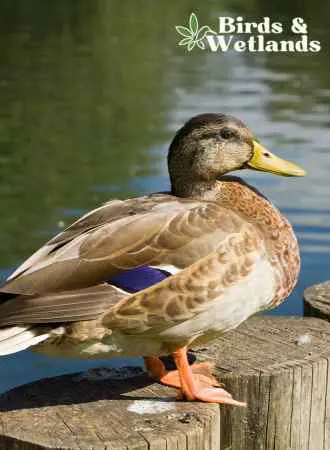
Here are the factors that affect duck longevity:
Basic Food and Clean Water Sources
Duck lifespan can be affected by many factors, but two of the most important are fresh water and proper nutrition.
Ducks need a fresh supply of water to drink and bathe in. A clean, well-maintained pond is ideal, but a pet duck will also be happy with fresh grass to lie on.
Proper nutrition is also essential for ducks. They should have a diet that includes fresh vegetables, grass, and fruits. Grit is also important for ducks, as it helps them digest their food properly. Small fish are also a good source of nutrition for ducks.
Best Overall Duck Feeder -FeatherEase Automatic Chicken Waterer & Feeder
Simplify Your Poultry Care with One Smart Solution!
Enhance your poultry care with the FeatherEase Automatic Chicken Waterer & Feeder, a convenient and efficient solution designed to keep your ducks and chickens well-fed and hydrated.

Pros
- Simplify your poultry care routine: Dual-function design combines an automatic waterer and feeder in one convenient unit.
- Save time and effort: Large feeder and waterer capacities reduce the need for frequent refill.
- Save money: Innovative no-waste feeding system minimizes feed spillage and waste.
- Long lasting: Food-grade, BPA-free materials ensure the safety and health of your poultry, while the durable constructio.
- Easy-to-assemble and maintain design simplifies the process of keeping your poultry hydrated and well-fed.
Cons
- Users with hard water may experience difficulty in separating the inner cup from the main cup of the waterer due to mineral buildup.
- The feeder’s holes may be too large for some users, allowing chickens to scatter food out, which could result in waste.
- The waterer may not function effectively in colder climates, requiring alternative solutions during the winter months.
Safe Shelter
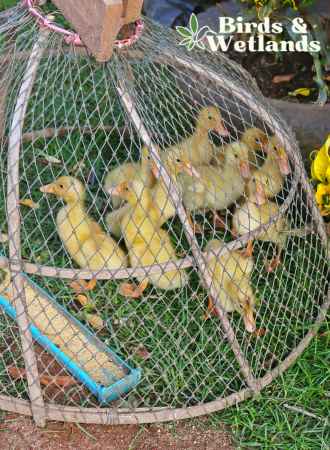
A duck needs a safe place to sleep at night, away from predators. The best option is a duck coop, which can be as simple or elaborate as you like. Inside the coop, provide a straw pile for the ducks to nest in. The straw should be changed regularly to ensure that the domestic ducks have a clean, safe place to sleep.
A well-maintained duck coop is good if you raise ducklings and will help extend the lifespan of older ducks by providing a safe, low-maintenance environment, allowing them to live a long life.
Woodlink Cedar Duck Nesting Box
Attract ducks to your wetland area and provide them with a cozy, secure nesting space using the expertly crafted Woodlink Cedar Duck House, made with high-quality materials in the USA.

Pros
- Ornithologically designed: This nesting box is specifically created for ducks, ensuring an optimal environment for them to thrive.
- High-quality materials: Made from re-forested, kiln-dried, inland red cedar, the Woodlink Cedar Duck House is both durable and eco-friendly.
- Easy to install: The nesting box comes fully assembled, with screws included for quick and easy mounting.
- Made in the USA: Take pride in knowing that you are supporting a product that is made domestically, ensuring top-notch quality and craftsmanship.
- Versatile use: While designed specifically for ducks, this nesting box can also be occupied by other species like screech owls, squirrels, and pileated woodpeckers.
Cons
- Mounting height: Users must research and choose the appropriate mounting height (usually 4-6 feet above the ground) and install a baffle on the post to deter predators like raccoons and cats.
- Limited viewing access: Although the front of the box can be opened for viewing, it is important not to disturb nesting birds, which may limit opportunities for observation.
Enough Space to Roam
Ducks are free-range birds, meaning they need plenty of space to roam freely in order to stay healthy. In the wild, ducks will travel long distances in search of food and shelter. They also use their large territory to protect themselves from predators.
In captivity, however, ducks are often confined to small spaces where they can’t move around freely. This can lead to a number of health problems, including obesity, heart disease, and joint problems.
Ducks that are free to roam have been shown to be happier and healthier than those that are confined. It’s important to give ducks ample space to roam if you want them to stay healthy and happy.
Veterinary Care
Like all animals, backyard ducks and other birds need regular medical attention to maintain their health. A visit to the vet is important for many reasons: it allows for early detection of diseases, gives the duck a chance to receive vaccinations, and provides an opportunity for the owner to ask questions about care.
In addition, regular check-ups help to build a relationship between the duck and the vet, which can be helpful in the event of an emergency.
While ducks are relatively hardy creatures, they are susceptible to health problems if they do not receive proper medical care and veterinary advice from their duck owners. As such, it is essential that many duck owners provide their ducks with regular veterinary attention for their ducks’ health.
How Long Do Mallard Ducks Live?

There are numerous species of ducks but the Mallard duck is one of the most common ducks in the wild, and it’s also one of the most long-lived. These ducks can live between 8 to 10 years, though predation and food availability can reduce the lifespan of a Mallard duck to as little as 3 to 5 years.
Wild Mallards are large ducks and social creatures, and they often form large flocks. These ducks are also very adaptable, and they can live in a wide variety of habitats. In addition to being found in wetlands, Mallard ducks can also be found in open fields, forests, and even urban areas.
How Long Do Muscovy Ducks Live?
A Muscovy duck is a large duck species native to the Americas – Florida, Louisiana, Mexico and Central America and parts of South America.
In the wild, they typically have a lifespan of 8 to 12 years. However, domesticated Muscovy ducks often live much longer. The longer lifespan of domesticated ducks may be due to the fact that they are less likely to experience predation or disease. They are typically well-fed and protected from the elements, which can all help to extend their lifespans.
How Long Do Pekin Ducks Live?
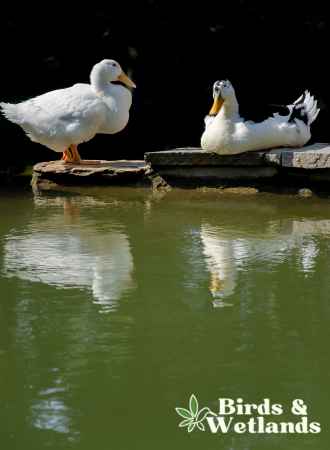
Pekin ducks are white ducks. A Pekin duck is a domestic breed of duck that is most commonly used in duck eggs and meat production. They are characterized by their white plumage and orange bill, and they typically weigh between four and six pounds.
Pekin ducks were originally bred in China, but they are now widely distributed throughout the world. In North America, they are the most common type of domestic duck, and they are also raised commercially in many other countries.
Pekin ducks typically have a lifespan of 5 to 10 years, although some individuals have been known to live for up to 20 years. However, they don’t lay eggs for the entirety of their life.
How Long Do Khaki Campbell Ducks Live?
Khaki Campbell ducks are a British domestic duck species. They were developed in the late 19th century and are now one of the most popular breeds of ducks in the world.
Khaki Campbells are known for their excellent egg-laying abilities, and they can lay up to 300 eggs per year. These ducks are also relatively long-lived, with an average lifespan of 8 to 10 years. However, some Khaki Campbells have been known to live for up to 15 years.
Khaki Campbells make great pet ducks and can provide their owners with many years of enjoyment.
How Long Do Indian Runner Ducks Live?
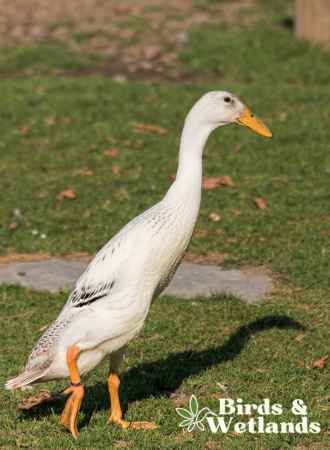
Indian Runner ducks are a popular breed of light ducks known for their upright stance and long, slim bodies. These ducks are great foragers and make excellent pets, but many people are curious about how long they can expect their Indian Runner duck to live.
In general, these ducks have a lifespan of 8 to 12 years. However, there are many factors that can affect a duck’s lifespan, including diet, housing, and health care. By providing your duck with good food and water, a clean and comfortable home, and regular vet checkups, you can help your duck to enjoy a long and healthy life.
FAQs on Duck Lifespan
What Is the Longest Living Duck?
The oldest known duck is a matter of some debate. One popular candidate for the title of the oldest duck is the female Mallard called Desi. Desi lived for 20 years and 3 months and was owned by a family in Maidenhead, UK. She died in 2002.
Which Duck Breed Lives the Longest?
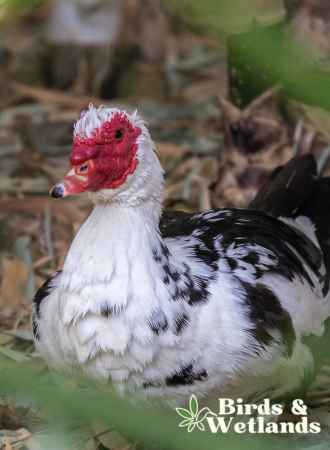
When it comes to ducks, there are dozens of different breeds, each with its own unique features. While some ducks are better suited for egg production, others are prized for their meat. But what about lifespan? Which duck breed lives the longest?
In the wild, Muscovy ducks typically live the longest. These larger breeds of ducks can reach 12 years of age or more. However, in captivity, Mallard and Pekin ducks tend to live the longest. These domestic breeds can reach 20 years of age or more with proper care.
Of course, lifespan is only one factor to consider when choosing a duck breed. But if you’re looking for a long-lived pet or farm bird, the Muscovy, Mallard, and Pekin are all good options.
Do Male Ducks Live Longer Than Female Ducks?
While there is some debate on the subject, it is generally believed that drakes tend to live longer than their female counterparts. There are a number of reasons for this difference in lifespan. For one, females, especially laying hens, typically have to expend more energy than males in order to produce eggs.
However, it should be noted that there is some variation among different duck species, so this is not always the case.

